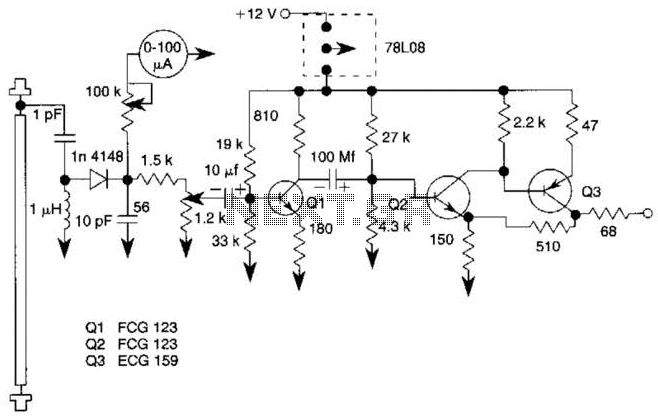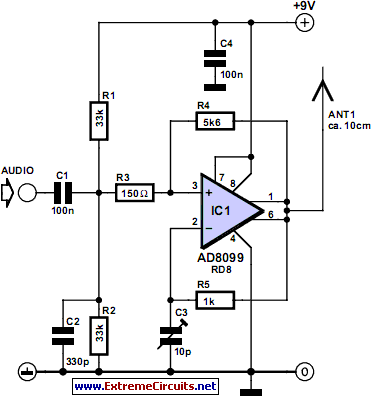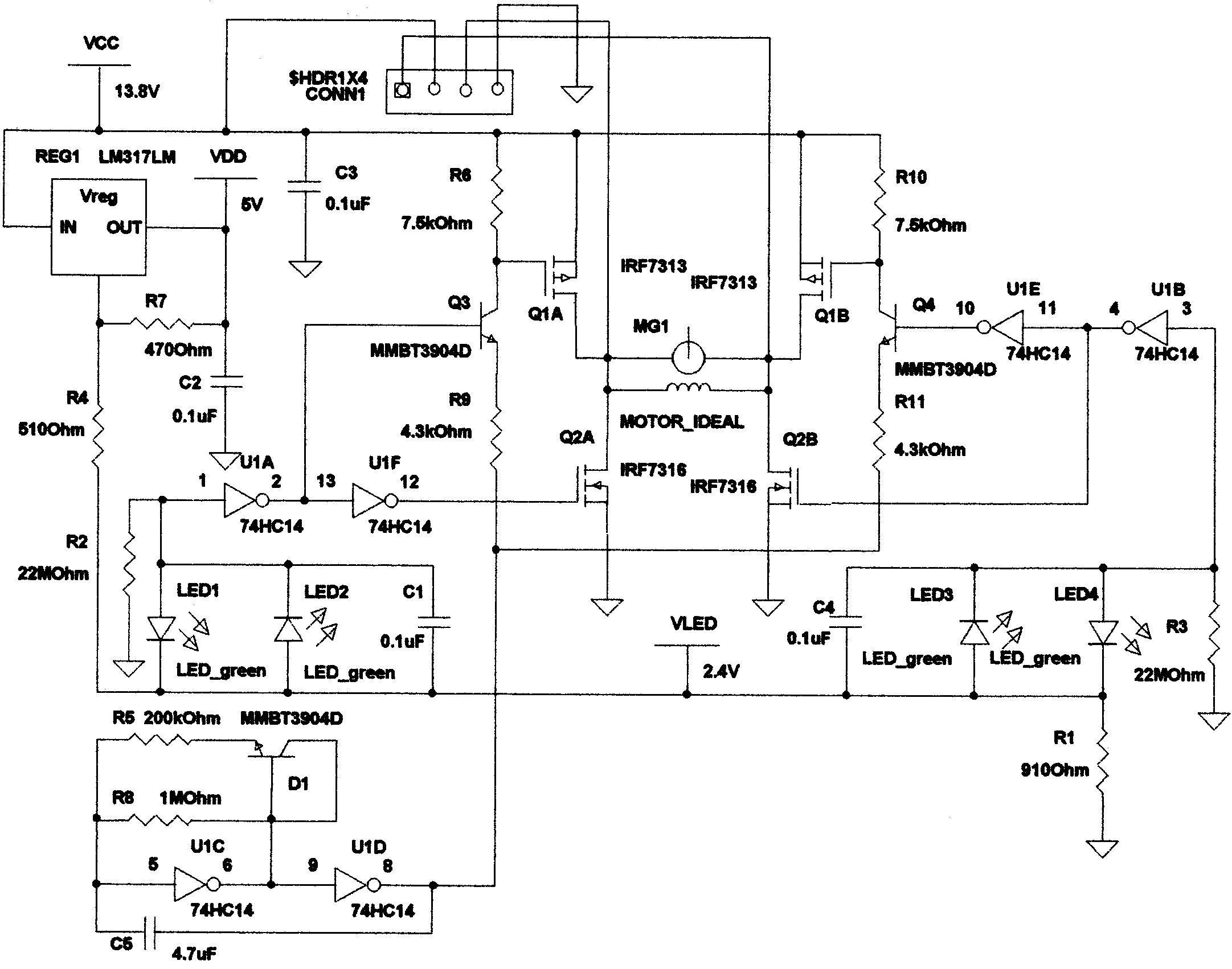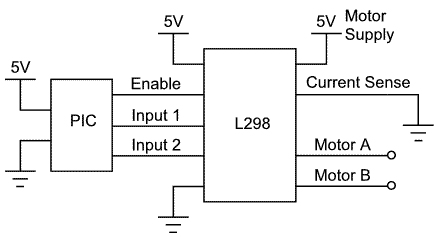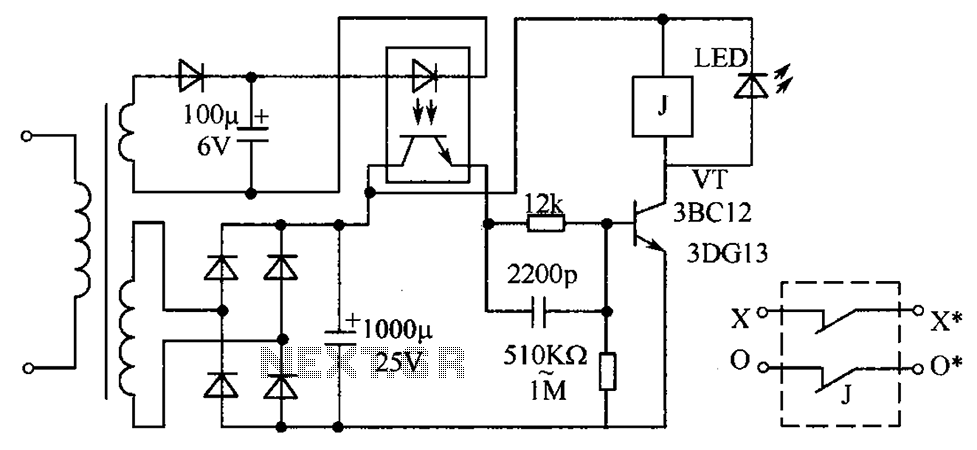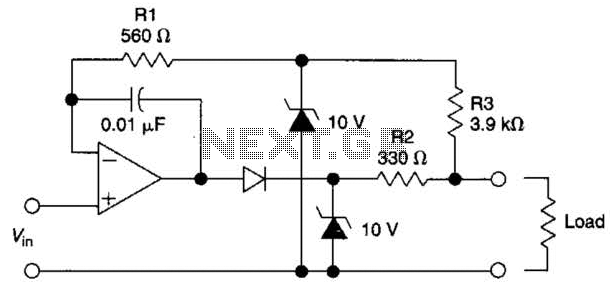
Ethernet remote device controller sensor circuit

The primary objective is to present the circuit diagram and describe the software utilized. A UDP application is employed to transmit commands to the microcontroller, which subsequently activates or deactivates the relay. It is anticipated that TCP implementation could also be feasible. The current UDP software occupies less than 3 kilobytes, which is significantly less than half of the memory capacity of an Atmega88. TCP would enable control of the device via a web browser; however, this has not yet been attempted. The circuit diagram provided is largely straightforward and adheres to standard configurations for the ENC28J60. The polarity of LED-B is crucial as it influences the duplex operation of the chip. Standard half-duplex operation is appropriate for a device that sends and receives minimal traffic. A relay can be connected to connector CONN3. It is important to note the presence of diode D1; it is intentionally oriented as shown in the circuit diagram. This diode serves a protective function for those intending to connect a small 6V relay to that output, safeguarding the entire circuit from potentially high voltages induced by the relay coil.
The circuit utilizes the ENC28J60 Ethernet controller, which provides a robust interface for network communications. The microcontroller, an Atmega88, is programmed to handle UDP packets, allowing for efficient command transmission and relay control. The design focuses on a half-duplex communication mode, which is suitable for applications with low traffic, thereby optimizing performance and minimizing the complexity of the circuit.
The inclusion of LED-B serves as an indicator of the operational status of the ENC28J60. Correct polarity is essential for proper functionality, as incorrect connections could lead to malfunction. The relay, connected through CONN3, is driven by the microcontroller's GPIO pin, enabling it to switch on or off based on received commands.
Diode D1 is a critical component in this circuit. It is placed in parallel with the relay coil and is oriented to allow current to flow in the reverse direction when the relay is deactivated. This action prevents voltage spikes, known as back EMF, which can occur when the relay coil is de-energized. Such spikes could potentially damage the microcontroller or other sensitive components within the circuit.
Overall, the design is aimed at providing a reliable and efficient means of controlling a relay through network commands, with considerations for both hardware protection and software efficiency. Future enhancements, such as TCP implementation, could further expand the functionality of this device, allowing for more versatile control options, including web-based interfaces.The main purpose is to show here the circuit diagram and explain the software. We use a UDP application to send commands to the microcontroller. Those commands will then cause the microcontroller to switch on or off the relay. It think it will be possible to even implement TCP. The current UDP software is less than 3k bytes and that is not even half of the memory on an Atmega88. TCP would then allow us to control the device via a web browser. I have however not tried it yet. Here is the circuit diagram. Most of it is very straight forward and standard for the ENC28J60. The polarity of LED-B is important as it determines the duplex operation of the chip. Standard Half-duplex is what makes most sense for a device which will send and receive only rather little traffic. A relay can be connected to connector CONN3. Note the diode D1. It is not useless and it is not the wrong way round in the circuit diagram even though it looks like that.
It is there for those who plan to connect a small 6V relay on that output. It protects the whole circuit against the possibly very high voltages which can be induced by the coil of a relay. 🔗 External reference
The circuit utilizes the ENC28J60 Ethernet controller, which provides a robust interface for network communications. The microcontroller, an Atmega88, is programmed to handle UDP packets, allowing for efficient command transmission and relay control. The design focuses on a half-duplex communication mode, which is suitable for applications with low traffic, thereby optimizing performance and minimizing the complexity of the circuit.
The inclusion of LED-B serves as an indicator of the operational status of the ENC28J60. Correct polarity is essential for proper functionality, as incorrect connections could lead to malfunction. The relay, connected through CONN3, is driven by the microcontroller's GPIO pin, enabling it to switch on or off based on received commands.
Diode D1 is a critical component in this circuit. It is placed in parallel with the relay coil and is oriented to allow current to flow in the reverse direction when the relay is deactivated. This action prevents voltage spikes, known as back EMF, which can occur when the relay coil is de-energized. Such spikes could potentially damage the microcontroller or other sensitive components within the circuit.
Overall, the design is aimed at providing a reliable and efficient means of controlling a relay through network commands, with considerations for both hardware protection and software efficiency. Future enhancements, such as TCP implementation, could further expand the functionality of this device, allowing for more versatile control options, including web-based interfaces.The main purpose is to show here the circuit diagram and explain the software. We use a UDP application to send commands to the microcontroller. Those commands will then cause the microcontroller to switch on or off the relay. It think it will be possible to even implement TCP. The current UDP software is less than 3k bytes and that is not even half of the memory on an Atmega88. TCP would then allow us to control the device via a web browser. I have however not tried it yet. Here is the circuit diagram. Most of it is very straight forward and standard for the ENC28J60. The polarity of LED-B is important as it determines the duplex operation of the chip. Standard Half-duplex is what makes most sense for a device which will send and receive only rather little traffic. A relay can be connected to connector CONN3. Note the diode D1. It is not useless and it is not the wrong way round in the circuit diagram even though it looks like that.
It is there for those who plan to connect a small 6V relay on that output. It protects the whole circuit against the possibly very high voltages which can be induced by the coil of a relay. 🔗 External reference
